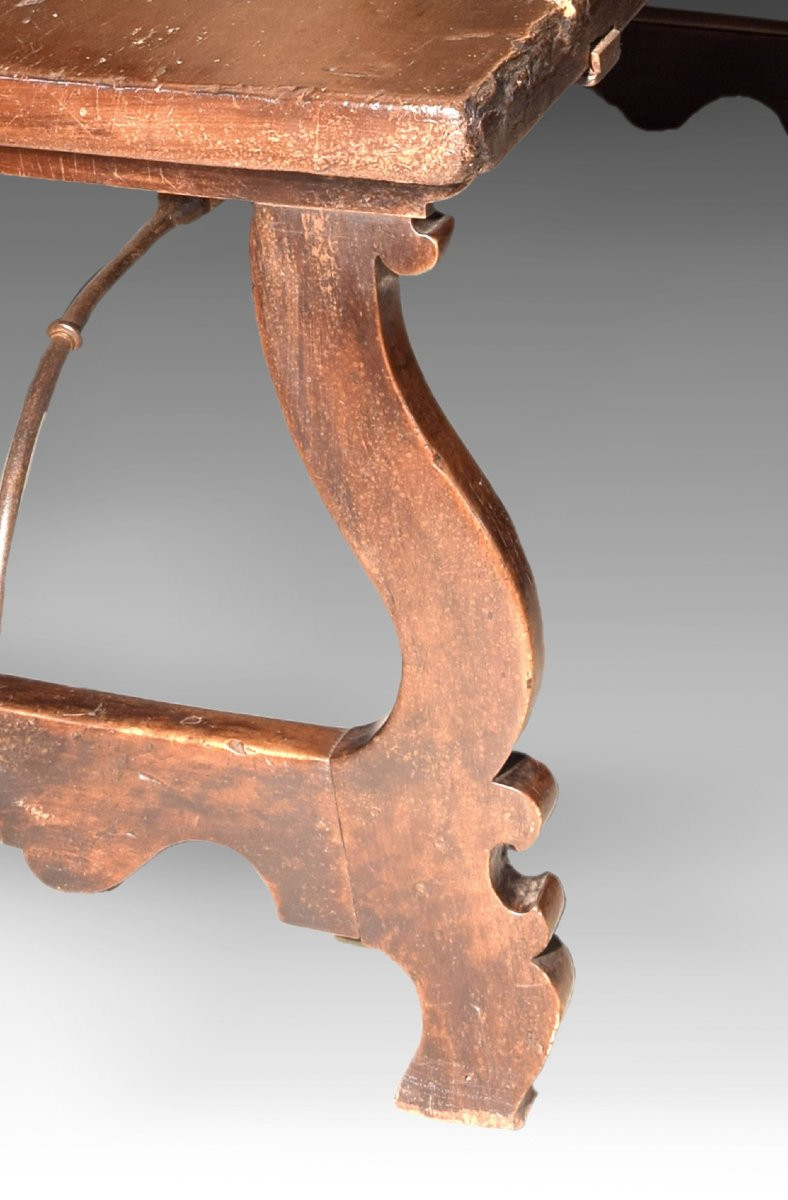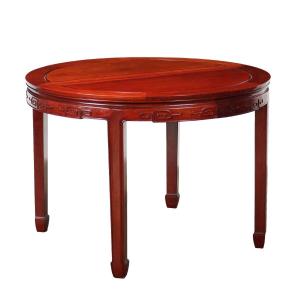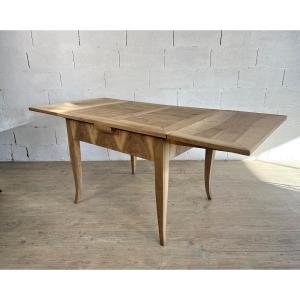Restored.
Rectangular top resting on two lyre-shaped legs whose edges are enlivened by curves and counter-curves attached to the top by two S-shaped wrought iron brackets, with balustraded areas towards the center and decorated with discs at the junction of the latter two. The upper part, very simple and with clean lines, clearly shows that this is a piece of furniture created for purely utilitarian purposes. However, its dimensions place it in a reasonably high-class home: this means that it was always seen in the same place, but dressed in a quality fabric and topped with a series of important pieces, ceramics, silverware, glass..., which were particularly appreciated by the owner. For this reason, it is the lower part that shows a little more work with the lyre legs with profiles animated by curves and counter-curves and small semicircular moldings, elements that, by their movement, place the work in the Baroque. These sinuous forms are also found in the attachments, tubular in the shape of a baluster towards the center and highlighted by discs of two sizes. Walnut is the most used wood in furniture of the period in Spain, and its shapes also reflect this origin. Although it is frequently found in houses of a certain level, few examples have survived due to the evolution of tastes and customs over the centuries. Notable examples include the Sala de las Firmas (Signature Hall) in the Viana Palace in Cordoba, the dining room of the Casa Museo de Lope de Vega in Madrid, the Museo Nacional de Artes Decorativas (National Museum of Decorative Arts) in Madrid (inventory CE 27479), and the Patio Elcano in the building known as the Ministry of Foreign Affairs in Madrid (Plaza de Santa Cruz). -
Size: 229x89x81 cms












































 Le Magazine de PROANTIC
Le Magazine de PROANTIC TRÉSORS Magazine
TRÉSORS Magazine Rivista Artiquariato
Rivista Artiquariato